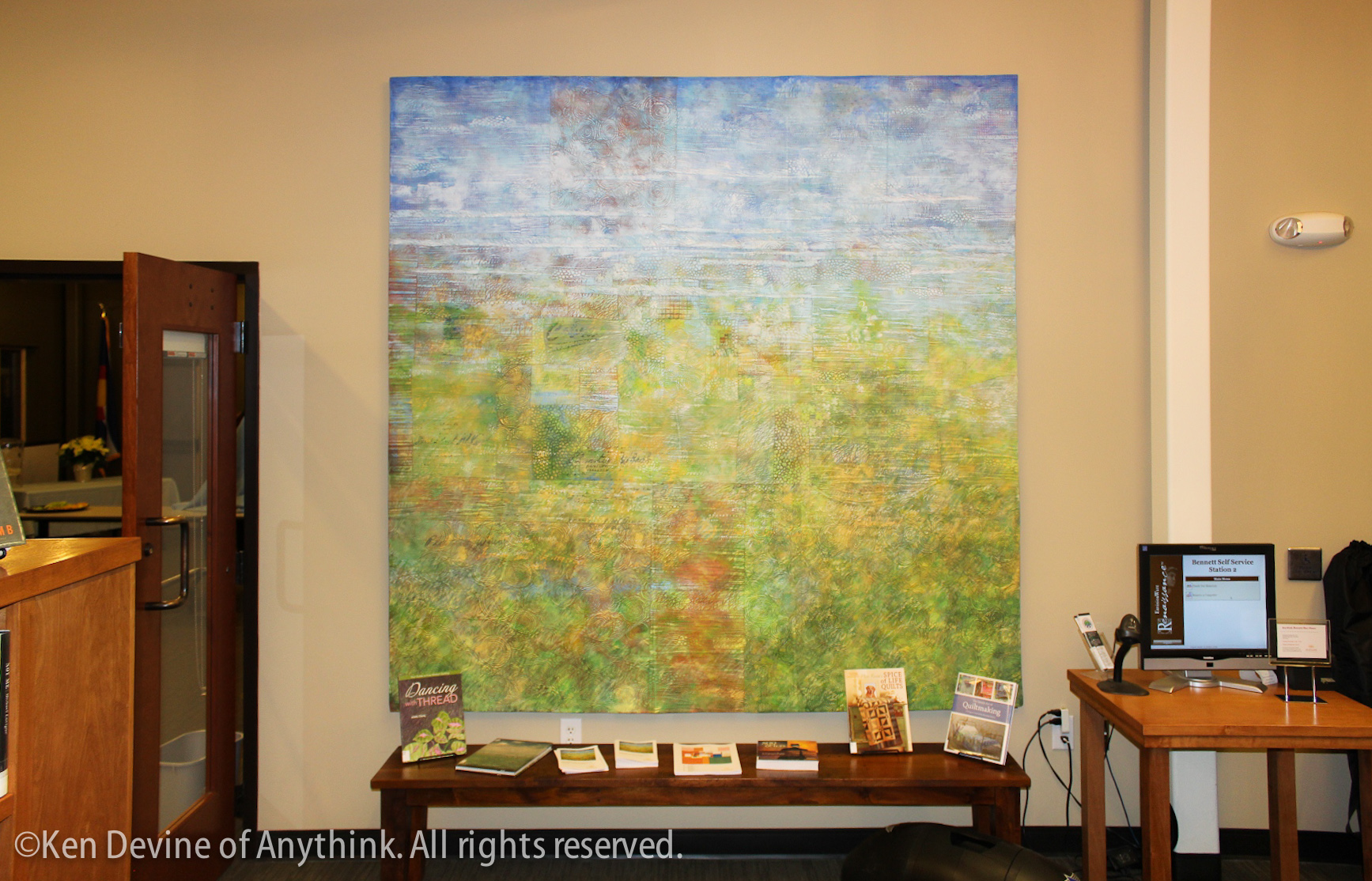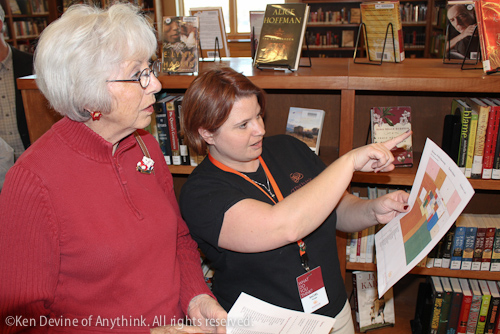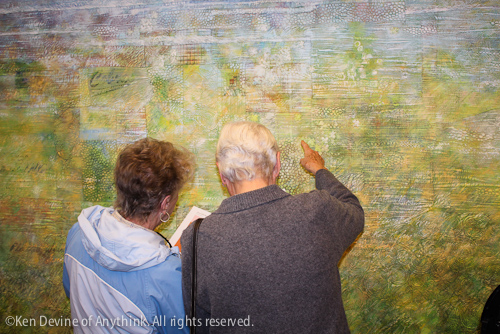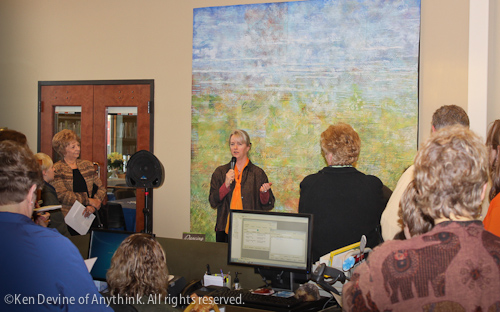Shades of White
 Sublimation, 30 x 40 inches, acrylic on panel, ©2011 Deidre Adams
Sublimation, 30 x 40 inches, acrylic on panel, ©2011 Deidre Adams
After finishing the Anythink commission, which had occupied the better part of my time for about three months, I felt a little rootless. I tried working on another textile piece, but it just didn’t want to cooperate. So I brought out all of the paintings that I had started but not finished in the preceding months. During the contemplation of them, a couple in particular were calling to me more emphatically than the others.
Not unsurprisingly, when winter in Colorado sets in for the long haul, my mood turns away from color and yearns for something subtle. I love winter and snow; I love to go for a walk in snow, when everything is covered in uniform whiteness. And I’ve long been drawn to create what I think of as “white” work. Even though there are many colors in the work, on first look they read as “white.” Last winter, I started a couple of white paintings, but set them aside as other things became more pressing.
According to color expert Kate Smith, white aids mental clarity, encourages us to clear clutter or obstacles, evokes purification of thoughts or actions, and enables new beginnings.* White has connotations of purity and cleanliness, which could be a source of ironic comment in context of my own immediate surroundings, but putting that aside, what I enjoy most about working with white is how interesting and challenging it can be to work with subtlety.
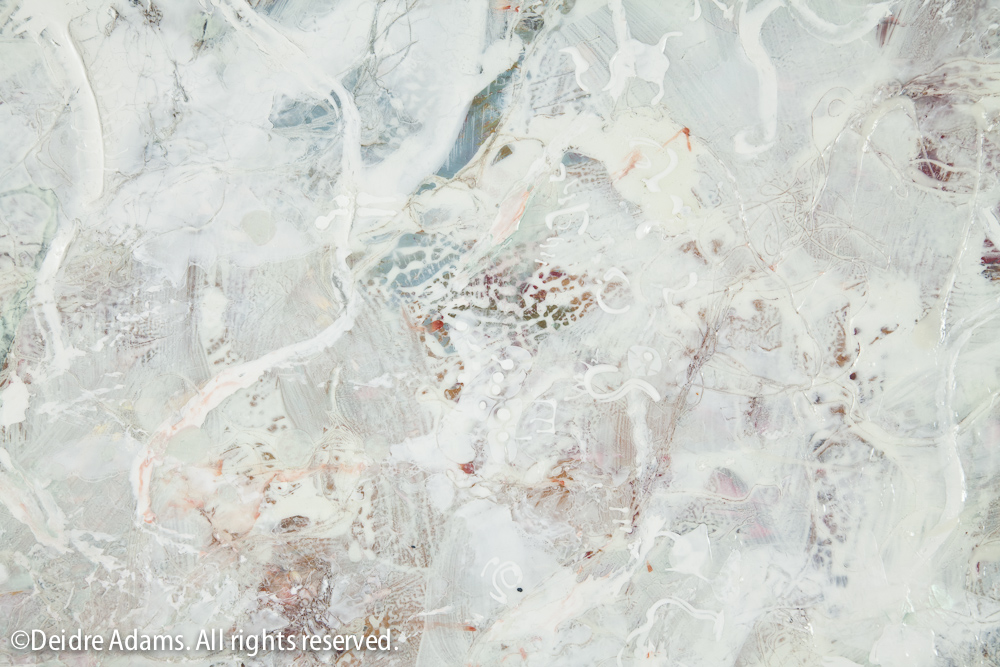 Sublimation, detail, ©2011 Deidre Adams
Sublimation, detail, ©2011 Deidre Adams
I’m exploring effects of depth by varying the transparencies of the whites and by adding layers of mediums and glazes in between. I’m also using small amounts of interference colors. They don’t show up in the photo very well, but when viewed in person, they create an interesting reflectance effect that varies depending on your point of view.
My fascination with whites goes back several years. My first “white” piece was Shades of White, done in 2006. I was thinking about the appearance of old walls that have been painted over with white in an attempt to obliterate something, but despite someone’s valiant effort, what lies beneath is often still visible like a kind of determined ghost.
 Shades of White, 48 x 48 inches, mixed media textile, ©2006 Deidre Adams
Shades of White, 48 x 48 inches, mixed media textile, ©2006 Deidre Adams
This one also has a landscape feel, so it’s ambiguous. It could just as well have been a Horizons piece, but that was secondary to the white idea.
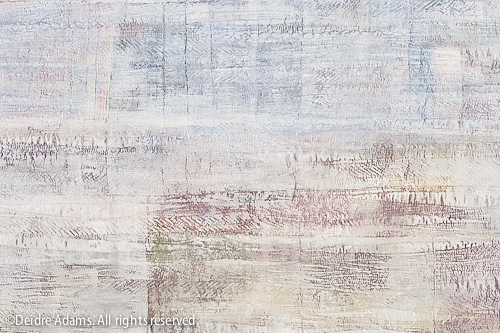 Shades of White, detail, ©2006 Deidre Adams
Shades of White, detail, ©2006 Deidre Adams
Here’s another one, not technically a “white” work because of the strong dark circles and a bit more color, but never miss an opportunity to show some older work, I always say. This is the first of what later became my Façade series, based on walls.
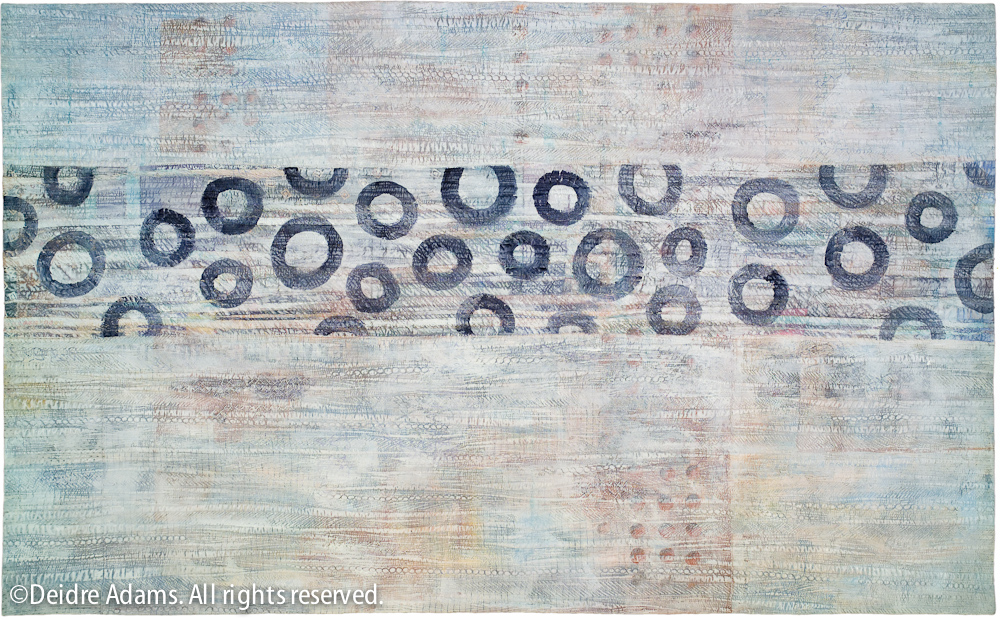 Façade I, 38 x 62 inches, mixed media textile, ©2006 Deidre Adams
Façade I, 38 x 62 inches, mixed media textile, ©2006 Deidre Adams
We’ve had what seems like a lot of snow so far this winter, but since it’s been in the high 50s for the last couple of days, it’s melting fast. That’s the great thing about winter in Colorado.
*All About the Color White by Kate Smith


